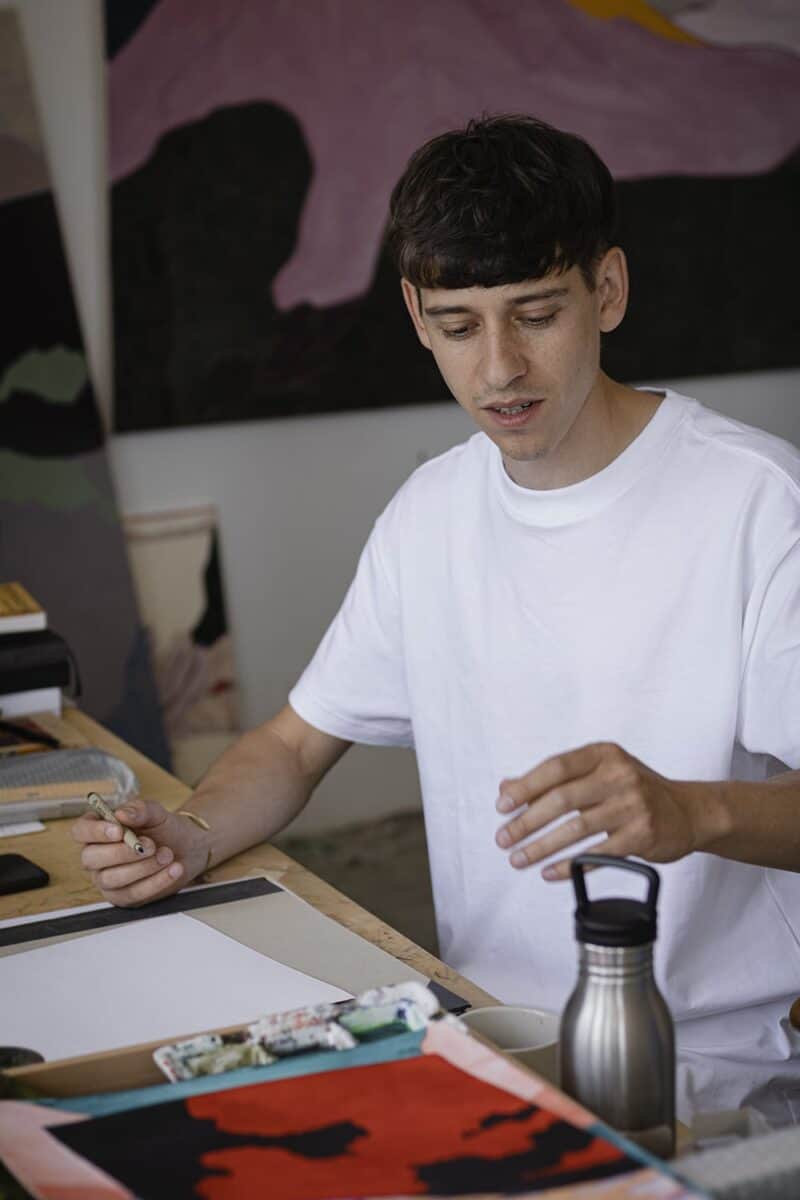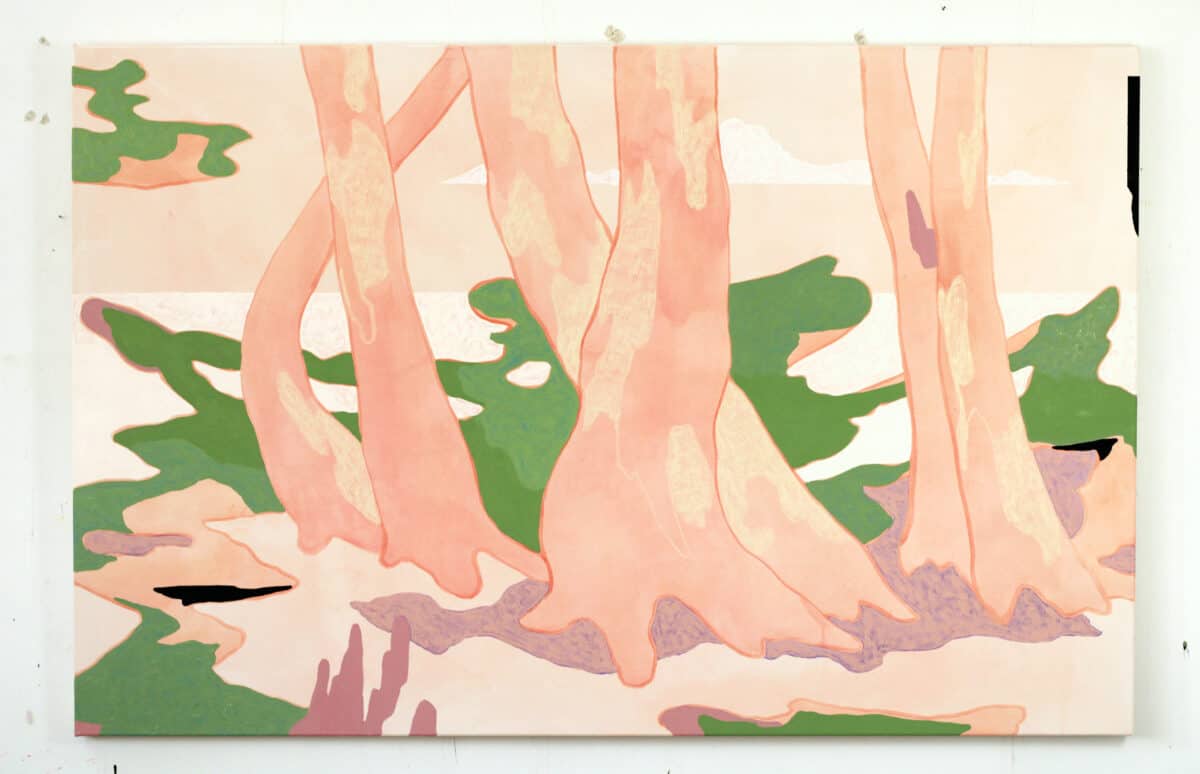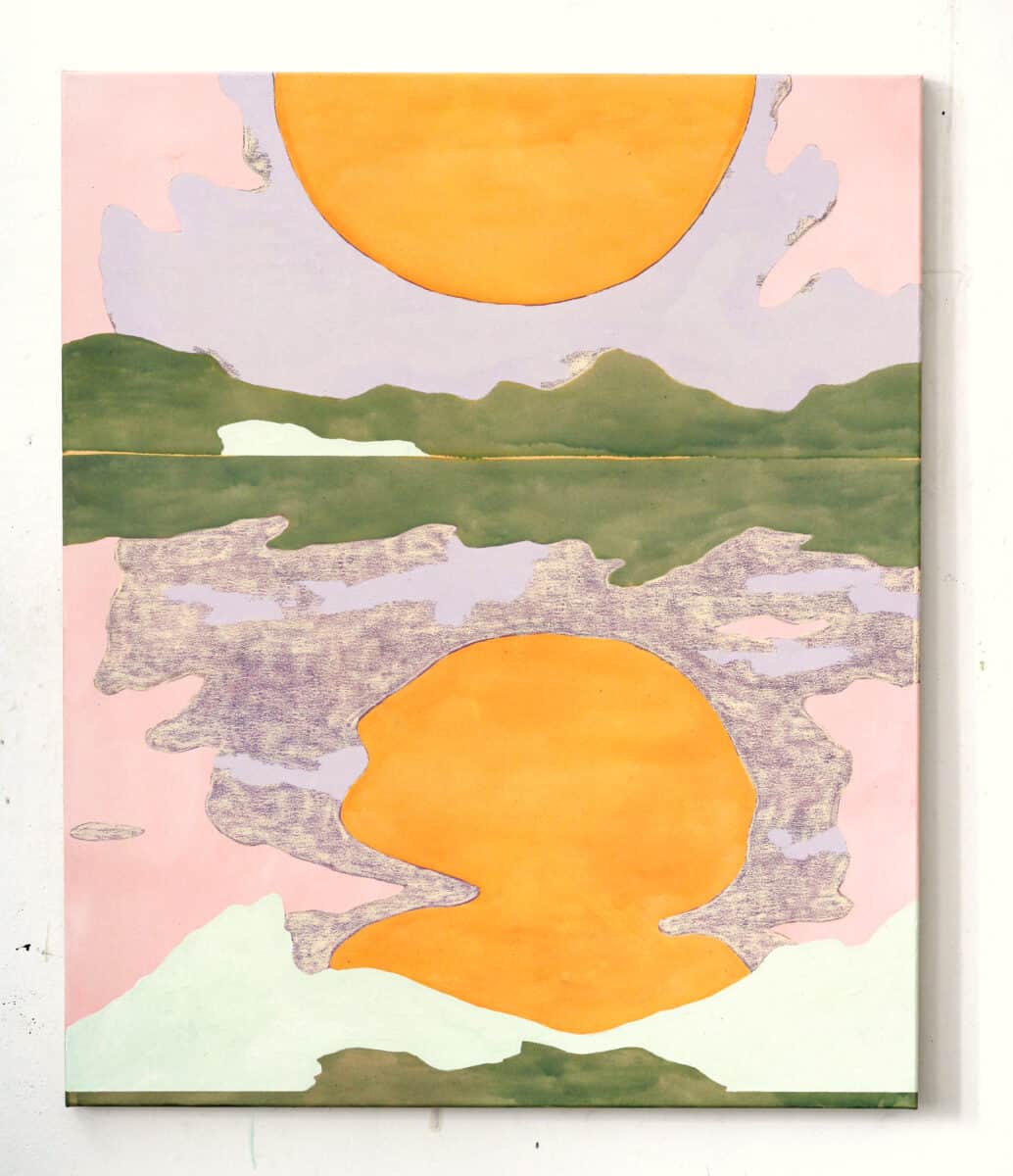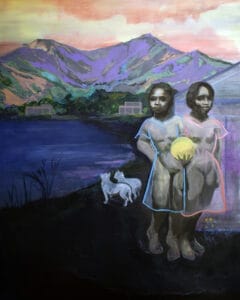There is something ineffable about the power of Raffael Bader’s paintings. Through a very sensitive use of form and colour, that conjures an idea of place while remaining distant and irreducible, Bader is able to capture and translate a fleeting feeling – the relief and rest bite of being immersed in nature. His large-scale works, in particular, take only the essential parts of a scene to form a stunning vista that makes one linger, waiting for the smell of dewy grass or preparing to hike up a steep mountain. His use of colour is considered and playful, welcoming a feeling of disharmony onto the canvas, which is often at odds with the perceived tranquillity of the landscape. It is this that makes his approach decidedly contemporary, it’s refusal to be either fully abstract or representational and its commitment to registering on an emotional rather than a purely visual plane.

Raffael Bader is a young German abstract Landscape painter who is quickly gaining recognition across Europe. Earlier this month, BWG Gallery hosted his debut London solo complete with an immersive installation and live plants. It was a welcome antidote to bustling and chilly London streets and achieved the very atmosphere Bader was seeking – one of quiet contemplation and a journey towards connection. Learn more about the budding German painter, and his recent UK debut.
Raffael, how would you describe your work to someone who has never seen it? Give us an introduction to your practice.
Very roughly put, my work is semi-abstract landscape painting. And yet, it is not purely about landscape. Much of my investigation explores the way in which humans process and take our place within the natural world, and how we relate to it on an emotional level. In my work, naturalistic elements stand in for inner conflicts, desires and needs, giving a sense that an emotional world is hidden beneath the landscape.

Your recent exhibition, Roam Inaccessible Paths Presented by BWG Gallery, was your first UK solo show. How was your work received by UK audiences?
London is a hectic and busy urban environment which stands as an anthesis to the emotional space the exhibition aimed to create for the viewer. We invited anyone in to calm down and take respite, while journeying through the works. Many guests seemed to really find resonance in the works, and it was great to be there in person and speak directly to them. This felt particularly pertinent in the post-pandemic context and an increasingly digitalised art world where so much happens online and via email.

Tell us more about your process. Much of the works you had on show were meditations on landscape and specific sites, are these places you visited in person? What kind of feelings did you get on visiting an environment you then chose to paint?
The show is about nature in an expanded sense – all the natural elements that surround us and ourselves as human beings that are also intrinsically a part of this ecosystem, even if we sometimes choose not to see it. For me, nature is a chaotic entity that is constantly striving for harmony, this being a basic principle of life. Through depicting natural elements and certain sites, I wade through my own inner landscape and ultimately question my own place within it all. Much like this notion of chaos reaching for harmony, everything is in a constant state of flux and the process is a continuous one. In this way, nature’s pathway and my painting process mirror one another – I do not seek perfection but welcome error and resultant abstractions. I focus on the essential elements of a scene and create works onto which a viewer’s own meaning and inner state can be impressed.
When I am in a forest or climbing a mountain, by the side of a lake or the sea, I often feel more connected to myself than when anywhere else. Yet I am not seeking to distance myself entirely from urban environments either and I also like being around people. I think my work allows me to carry on this feeling of being in nature wherever I am. I absorb the scenes I see out in the wilderness like a sponge, and keep them with me until they are reformed and unfold once again in front of me on the canvas.

Your colour choice is somewhat unusual when depicting landscape – what motivates this? How do you select your palette for each work?
Colour is very important to me, and is closely linked with emotion. When you look at the natural world around you, you initially see certain colours that are expected, green grass for example, but when you look more closely there are often shades you wouldn’t have expected at play. When you really take in a vista, you realise tones are present that are unusual, surreal even. I am interested in this polychromatic ambiguity, and the way in which colours interact with one another. These things can be manipulated to trigger certain feelings and alter the perception of a piece or a place.
For your recent show, the installation of the work was very specific; many of the paintings were grouped together in busy series while a small number stood alone and monumental. There were also central viewing benches, inspired by picnic and outdoor seating one might find in a national park. How did this arrangement of work and the installation come about?
For me, the process of painting is itself a kind of journey. We wanted to centralise this idea of travelling outdoors, so we included the benches to both remind people of places they might have visited and to create a space for quite reflection. We were exploring both real journeys and inner, emotional ones, the installation welcomed the viewer to spend contemplative time with the work and look deeper into themselves upon viewing it.
Can you tell us a little about your approach to surface and texture?
Most of the pieces start with “notes”, which are small simple drawings that arise intuitively, then I decide whether I want to paint them. Once I choose to make a painting, it quickly takes on a life of its own. I work with oil paint and oil pencils on canvas, while also using a medium that makes the oil paint water-miscible, so I can create very thin watery layers. This is the part of the process where texture become important, as these tinner washes really contrast with thicker marks made by the oil pencils. From a distance, my work can appear flat, but up close a sense of playing with texture and layering offers depth.

With this exhibition just having closed, what’s next for you upon your return to Germany?
I will go straight back to my studio, where some works in progress are awaiting my return. I also have some great projects coming up; in December I will participate in a group exhibition at Annarumma Gallery in Naples, in January I have the London Art Fair with Candida Stevens Gallery, in March I have a large group exhibition alongside other contemporary landscape painters in Barcelona at Alzueta Gallery, then a solo exhibition in Berlin at K12 Gallery in April, and a duo exhibition with Danish painter Thomas Mau at enari Gallery in Amsterdam at the end of April. A busy year ahead!
@brushes_with_greatness | @raffaelbader







